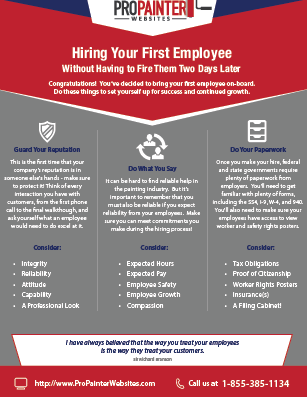Beneath The Surface Of Your Industrial External Paint Project Lies The Critical Function Of Weather-- Discover Exactly How It Can Make Or Break Your Outcomes
Beneath The Surface Of Your Industrial External Paint Project Lies The Critical Function Of Weather-- Discover Exactly How It Can Make Or Break Your Outcomes
Blog Article
Short Article Created By-Sutherland George
When you're preparing an industrial external painting task, do not undervalue the influence of weather condition on your results. You require to think about factors like temperature level, moisture, and rainfall, as they can make or break your paint task. For example, did you understand that optimal problems require particular temperature level ranges and moisture levels? Failing to monitor these facets can lead to unequal finishes or perhaps damages to fresh paint. Understanding these elements is crucial to accomplishing a resilient, expert end result. So, what certain weather should you be wary of?
Temperature level Considerations
When it comes to business external painting, temperature level plays a vital duty in the end result of your project. If you're repainting in extreme heat, the paint can dry also rapidly, leading to problems like inadequate attachment and irregular coatings. You intend to aim for temperature levels between 50 ° F and 85 ° F for the best results. Below 50 ° F, paint may not heal appropriately, while over 85 ° F, you run the risk of blistering and cracking.
Timing your job with the best temperature levels is essential. Begin your work early in the morning or later on in the mid-day when it's cooler, particularly throughout hot months.
Additionally, take into consideration the surface area temperature level; it can be dramatically more than the air temperature level, especially on bright days. Make go to this website of a surface area thermostat to inspect this prior to you begin.
If temperatures are unpredictable, watch on the weather forecast. Abrupt temperature drops or heat waves can thwart your strategies. You do not wish to start painting only to have the conditions transform mid-project.
Humidity Degrees
Moisture degrees significantly influence the success of your commercial external paint project. When the humidity is too expensive, it can impede paint drying and curing, leading to a variety of problems like poor attachment and complete quality.
If you're planning a task throughout damp conditions, you could discover that the paint takes longer to dry, which can extend your task timeline and boost expenses.
On the other hand, reduced humidity can also position challenges. Paint may dry out also rapidly, protecting against proper application and leading to an irregular finish.
You'll want to keep track of the moisture levels carefully to guarantee you're functioning within the ideal range, usually in between 40% and 70%.
To obtain the best outcomes, consider utilizing a hygrometer to gauge humidity before starting your task.
If you discover the levels are outside the ideal array, you might require to readjust your timetable or pick paints created for variable conditions.
Constantly seek advice from the producer's standards for details recommendations on humidity tolerance.
Precipitation Effect
Rainfall or snow can significantly interrupt your industrial outside painting plans. When precipitation happens, it can wash away freshly used paint or develop an irregular surface. Ideally, you intend to choose days with dry climate to make certain the paint sticks correctly and cures effectively. If you're captured in a shower, it's ideal to stop the job and wait on problems to boost.
In addition, snow can be even more detrimental. Not only does it create a wet surface, yet it can also reduce temperature levels, making it hard for paint to dry. This can result in issues like peeling or blistering down the line.
It's crucial to inspect the weather report before starting your job. If Get the facts or snow is anticipated, take into consideration rescheduling.
Constantly keep in mind to enable ample drying out time between coats, specifically if the weather remains unpredictable.
Final thought
Finally, keeping an eye on the weather condition is essential for a successful industrial external paint task. By keeping track of temperature, humidity, and rainfall, you can make sure the best problems for application and healing. Remember to intend your work around desirable weather and always follow supplier guidelines. With the appropriate method, you'll accomplish a durable, gorgeous coating that can withstand the components. Do not allow the weather capture you unsuspecting-- stay educated and repaint smart!
